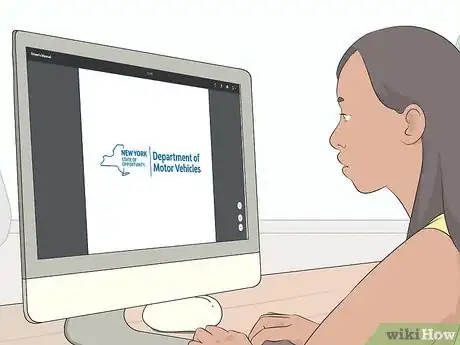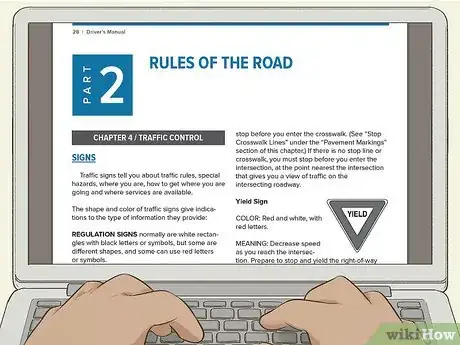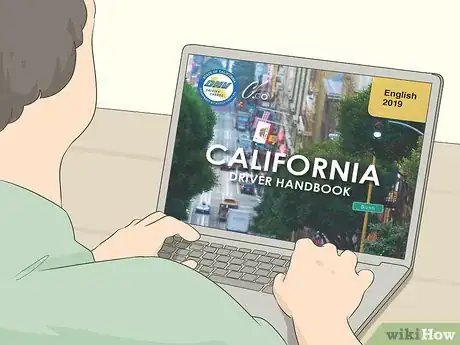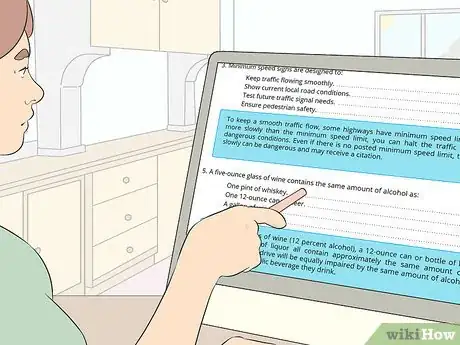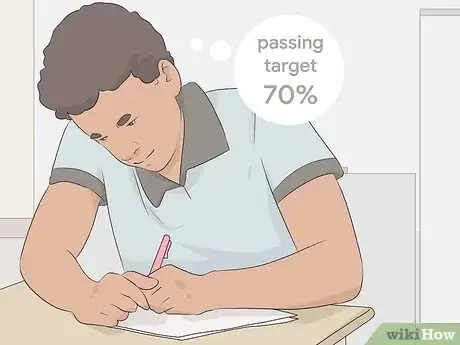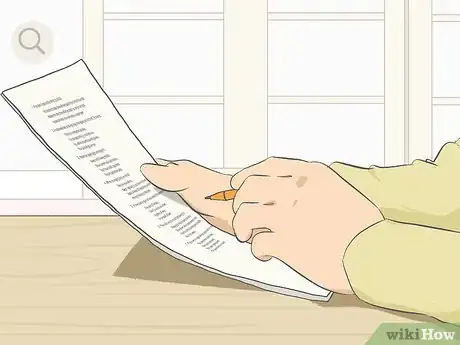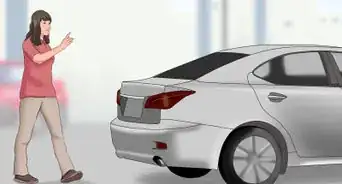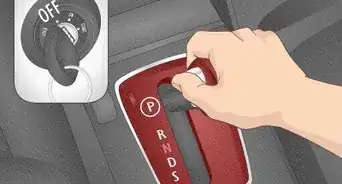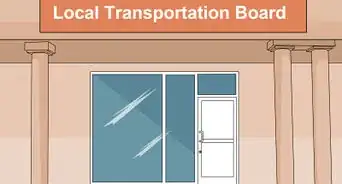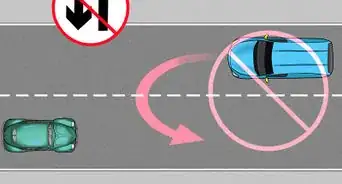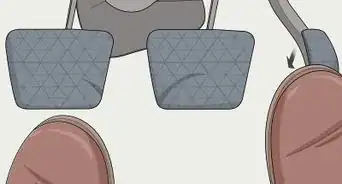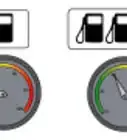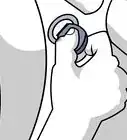This article was co-authored by Simon Miyerov. Simon Miyerov is the President and Driving Instructor for Drive Rite Academy, a driving academy based out of New York City. Simon has over 8 years of driving instruction experience. His mission is to ensure the safety of everyday drivers and continue to make New York a safer and efficient driving environment.
There are 10 references cited in this article, which can be found at the bottom of the page.
This article has been viewed 16,875 times.
In order to get a driver’s license in the US and its territories, you need to pass a written exam that tests your knowledge about the rules of the road and your ability to recognize road signs. This is almost always a requirement alongside a practical drive test, which gets a lot more attention. However, the written portion is just as important, and it can be harder to prepare for without the right materials. By studying your state’s guide, taking practice exams, and showing up ready for success on your test day, you’ll meet the passing score threshold with ease.
Steps
Studying for the Written Test
-
1Consult your state’s driver’s guide. Most, if not all states provide a manual for drivers studying to take the written exam. Typically, these guides will include all of the information that might be on the exam, so giving it a thorough read will expose you to the exact content of the test. Your job is simply to remember it![1]
- Start reviewing this guide around a month before you take the test to give you ample time to read through it and work on things like practice tests.
- You can take notes on the book as you go so you have a handy summary available for studying.
- The best way to learn something is to work on it every day, so spend some time each day reviewing some of the rules in the book and quizzing yourself.
-
2Learn the rules of the road in your state. If you have taken a driver’s education class, you’ll be well prepared for the exam already. Either way, pay close attention to the rules as they are described in the driver’s manual. Try to notice patterns, too, like that many traffic laws are related to different kinds of yielding to other drivers.[2]
- The test will probably feature wording very close to what’s in the guide, so pay attention to the phrases that crop up for certain laws.
- Don’t forget about driving laws that aren’t about traffic, like DUI blood alcohol limits and distracted driving.
Advertisement -
3Memorize the signs in your state’s guide. Written exams often require you to identify the meaning of road signs and state the action you should take when you see one. It’s unlikely that they’ll ask you about stop signs, but signs that warn for upcoming merges, curvy roads, directional signs, and other signs that have a more complex meaning might show up.[3]
- The best way to learn signs is to encounter them on practice drives.
- Remember that most signs are intuitive, and are designed to have an obvious meaning, so you don’t need to get stuck on memorizing every detail if your state asks you to learn lots of signs.
-
4Focus on state-specific traffic laws. Most states have a few driving laws that are particular to that state or a handful of states, and these are often more likely to appear on the exam. Things like passing and turning left at a red light onto a one-way street are inconsistent across states, so you should memorize these laws and expect to see them on the test.[4]
Taking Practice Tests
-
1Download practice tests or request them from your DMV. Many DMV sites have PDFs of practice tests that you can download and print out. If you don’t see any, check the back of the driver’s guide to see if they are there, or call your local DMV to ask if they have practice tests available in person.[5]
- If you can’t track down practice tests, quiz yourself on the guide by choosing a section from the table of contents and writing down everything you can remember. Flip through the section and see what you forgot.
-
2Use the same time limit as the real exam. As you take practice tests, it’s important that you adhere to the time constraints that you’ll be under for the real thing. Otherwise, you might get used to taking longer than you have on the test. Set a timer to go off when time is up and see how much of the test you were able to get through.[6]
- If the time limit isn’t listed on the practice test, be sure to check online to see if the limit is listed there.
-
3Grade your scores and compare them to the passing threshold. Each practice test should come with a rubric that you can check your answers against. Look at the answer to each question and see if you marked the right answer. Be sure to tally your score as you go, marking the ones you missed for review later.[7]
- Try writing down the question and the correct answer so you can get practice associating them with each other.
-
4Study the questions you missed. As you work on practice tests, you’ll almost certainly miss some of the questions. After you’ve graded your test, go back to the guide book and re-read the section on that topic to establish the right answer in your mind, so you don’t make the same mistake on the real exam.[8]
- Make note of any topics that keep cropping up in your missed questions, and focus your studying on those areas.
-
5Take more tests to improve your score. Even if you passed on your first try, it’s still a good idea to practice on a few tests, if you have access to more than one. You should take the tests until you pass one, and at least one more after that to make sure it wasn’t just the specific questions on that version.[9]
- Just like tests in school, you’ll need a larger body of knowledge than will actually appear on the test to pass, since any number of topics could come up.
Succeeding on the Exam
-
1Get a good night’s sleep and eat a healthy breakfast before the exam. It may sound cliche, but it’s important to be well-rested and well-fed so that you can stay alert and focused during the exam.[10] Try to get a full 8 hours of sleep the night before, and wake up with plenty of time to get ready and eat breakfast. Good breakfasts include protein, carbs, and fruit to keep your brain working at full power.[11]
- Try not to cram studying on the day before, and don’t worry about reviewing your notes all morning. A quick glance over your notes before you head out will be plenty if you have been preparing.
- Don’t bring your notes to the DMV unless you are going with someone who can hold onto them. Having notes in the testing area is typically an immediate disqualification.
-
2Keep the passing target in mind as you take the test. Remember that you don’t have to get 100% to pass the test. Most states have thresholds closer to 80% or so, or around C+ or B- on a test. As you are taking the test, focus on answering questions you know the answer to first.[12]
- It’s a good idea to memorize the number of questions you need to answer correctly in order to pass ahead of time.
- You can calculate the passing threshold by multiplying the percentage by the number of questions. Remember to turn the percentage into a fraction first. For example, a 40 question exam with a threshold of 80% requires you to get .8 multiplied by 40 questions right, which comes to 32 questions.
- Don’t rely on the threshold or focus on it too much during the exam. It should relax you, rather than add to your stress.
-
3Stay calm throughout the exam. Taking any exam can be a stressful experience, but it’s important to keep your calm as best you can so that you can focus on the questions. If you are starting to run out of time, answer the questions that you know or feel confident about and spend any remaining time trying to put down an answer for the rest of the question.[13]
- Some ways to stay calm include practicing positive self-talk, staying focused on the task and not others’ progress, and taking deep breaths.
-
4Read each question thoroughly before answering. Traffic laws are often simple on the surface, but the test may give you situations that have lots of factors you may never have thought of. You should read each question twice to be sure you aren’t missing something that would change your answer.
- Remember that this is just like any other test, and you should treat it as seriously as one in school.
-
5Review your answers before submitting the test. If you are taking a paper exam and are able to check over your answers before you finish, be sure to do so. Make sure you didn’t miss any questions on the exam, and see if your answers seem to fit your intuition. Don’t agonize over every question, just try to put an answer down for each question, whether or not you are 100% sure of the answer.[14]
- Unlike some tests, the written license exam won’t punish you for guessing. If you aren’t sure what the answer is, just put something down that seems plausible, rather than leaving it blank.
-
6Schedule and study for a retake if you don’t pass. If you don’t pass the exam, most states ask you to wait several weeks to take the test again, but you can typically schedule it right afterward if they give you your grade at the DMV. Otherwise, call them to schedule the appointment. Between the first exam and the next, be sure to study and review the guide again.[15]
- If you get to see which questions you missed, study those topics in particular.
References
- ↑ Simon Miyerov. Driving Instructor. Expert Interview. 4 December 2019.
- ↑ https://www.dmv.ca.gov/portal/dmv/detail/about/senior/driverlicense/written
- ↑ https://www.ncdot.gov/dmv/license-id/driver-licenses/new-drivers/Pages/driver-license-tests.aspx
- ↑ https://www.mit.edu/~jfc/right.html
- ↑ Simon Miyerov. Driving Instructor. Expert Interview. 4 December 2019.
- ↑ https://dmv.dc.gov/service/knowledge-test
- ↑ https://www.ksrevenue.org/pdf/dlhb.pdf
- ↑ https://www.kqed.org/mindshift/49750/a-better-way-to-study-through-self-testing-and-distributed-practice
- ↑ https://www.kqed.org/mindshift/49750/a-better-way-to-study-through-self-testing-and-distributed-practice
- ↑ Simon Miyerov. Driving Instructor. Expert Interview. 4 December 2019.
- ↑ https://www.healthiersf.org/Nutrition/resources/3.2.3%20Healthy%20Breakfasts%20Can%20Energize%20Your%20Child%20for%20Testing%20Eng.pdf
- ↑ https://www.ksrevenue.org/pdf/dlhb.pdf
- ↑ https://www.dmv.ca.gov/portal/dmv/detail/about/senior/driverlicense/written
- ↑ https://pennstatelearning.psu.edu/test-taking-tips
- ↑ https://www.dol.wa.gov/driverslicense/docs/driverguide-en.pdf
